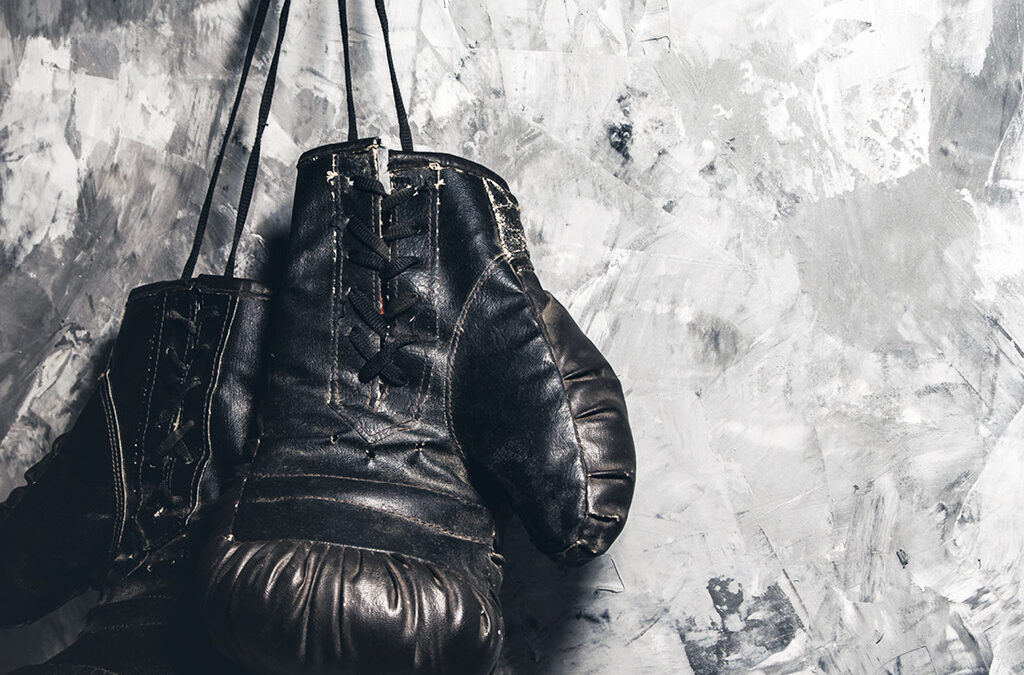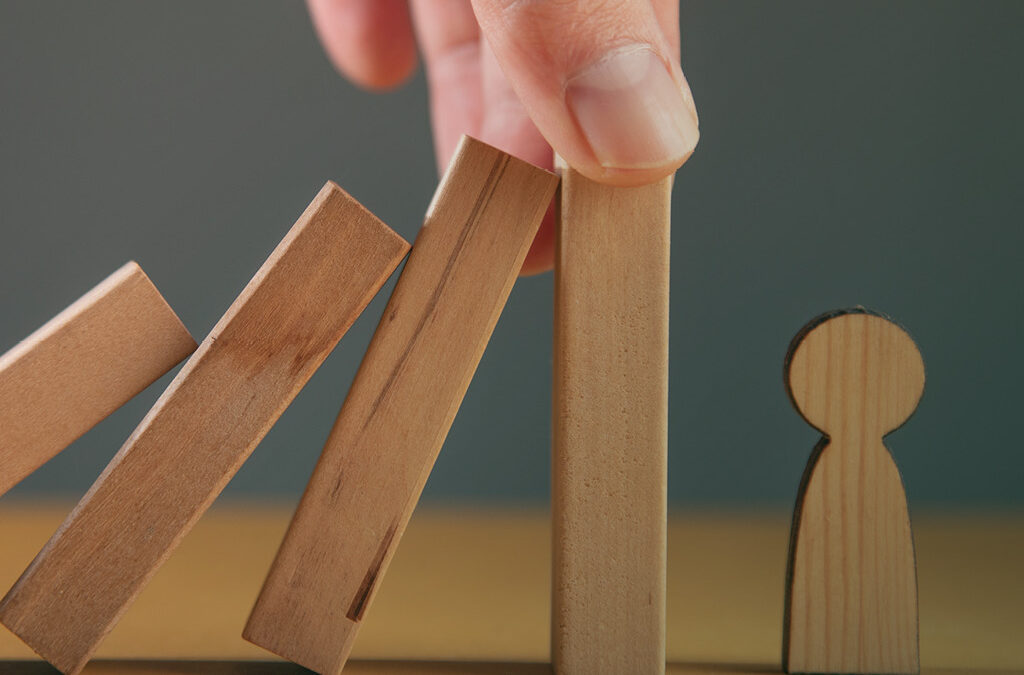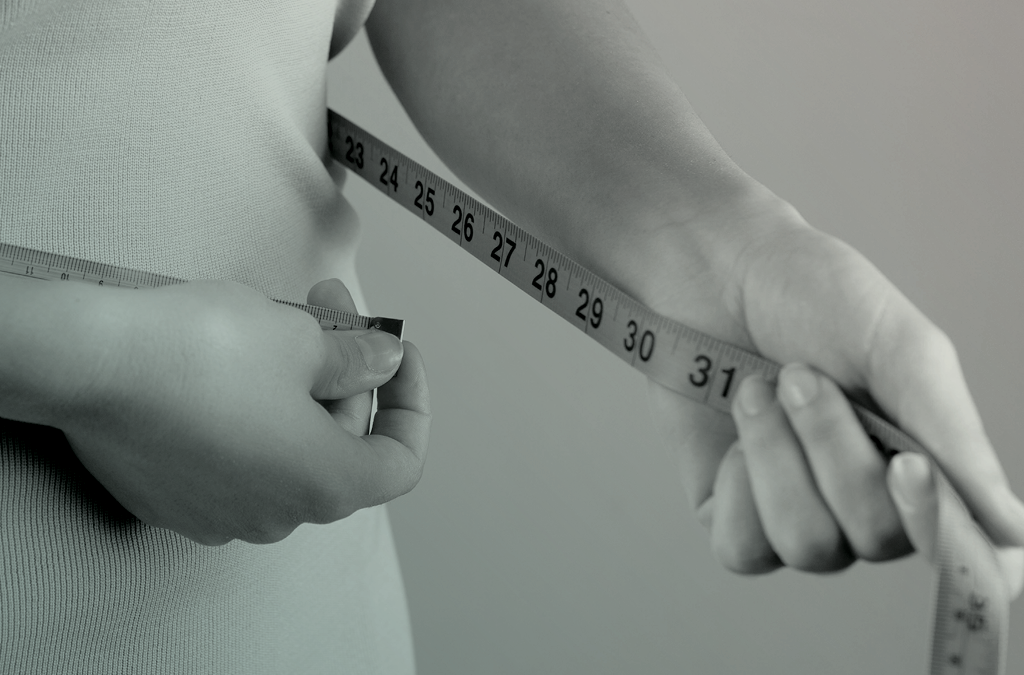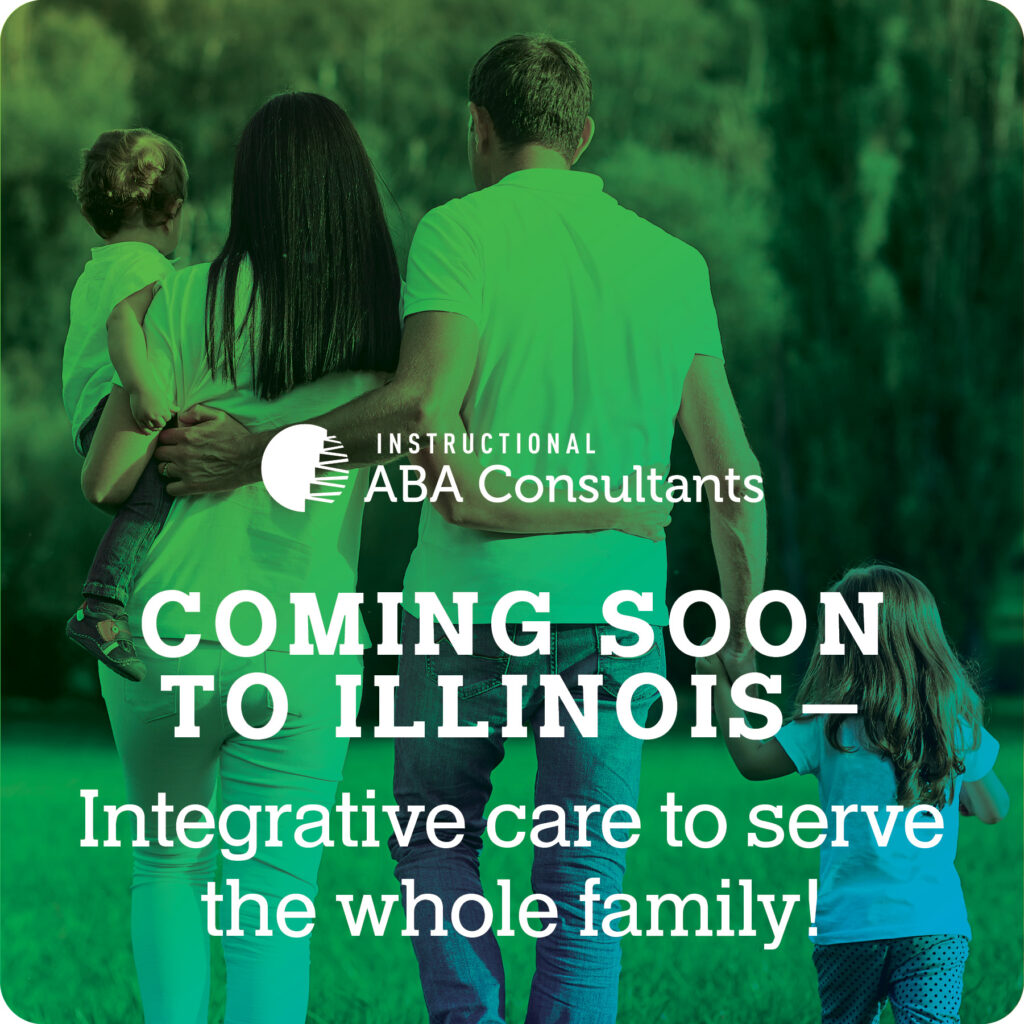
by Jessie Cooper | Jul 13, 2023
In my last blog, I wrote to you about our darling protectors. I taught you about how our emotions and the “protectors” in our internal system are there to protect us. Our protectors quickly stand on high alert for us when they see or feel a perceived threat. Yet left untamed or misunderstood protectors can actually do the opposite causing more harm than good. Our protectors are fierce defenders that want to be seen so that we can be safe. The problem is they often come out with their boxing gloves on. When you’re leading a life with a spacious, loving heart the boxing gloves are a little far from your integrity. The work then becomes slipping off the boxing gloves while listening to the message your protectors are trying to convey.
As a behavior analyst, emotions were not something I studied through my clinical training. I studied behaviors you can observe. I’m nearly confident that at some point in my early 20’s, I posted something on social media to the tune of, “Emotions aren’t real!” I was super fun in my 20s and by fun, I mean I was really outspoken without enough life experience to back it up. But as time and life went on the impact of emotions on my own quality of life, as well as clinical practice were undeniable. Brene Brown stands correct that we are emotional beings, that sometimes think, and always behave. Our emotions are at the root of our humanity. As I began to understand the role of our emotions and internal family systems my eyes were opened. I could clearly see how tending to our emotions is the only way to live in alignment with our integrity. Our emotions are the soul of our life experiences and most of the behavior we observe is connected to them.
Emotions Beneath Our Protectors
In looking at emotions this way, as an integral part of our lived experience, we can begin to understand how to tend to ourselves in a loving and compassionate way. This can be important with our positive emotions, we want to know what brings us joy! But for today, I’m going to write about the emotions beneath our protectors. As I’ve walked through some incredibly difficult times in my life, it was fear that kept me away from myself and it was love that set me free. When my protectors showed up with gloves on, which was often for a period of my life, I led my life with a racing heart unable to see my way out. The fear felt front and center, my protectors at the wheel, with me riding as a passenger in my life. This was not a life I wanted. I would get through a situation defending myself only to feel worse. The emotional hangover of letting fear drive you is filled with shame and guilt.
As the years passed and I was able to work through my emotions one tricky experience at a time I began to form a new understanding of my fear. In the past few weeks, as I’ve navigated a bump in my fear road, this new understanding fully formed. I’m not a perfect person, or divinely brilliant. But I am a human who has been through an awful lot and have chosen to use education as well as self-reflection to navigate my own life. So, here we go, here is my profound thought:
“Fear is not a fear of the world, it is a fear that in the end, we will not be able to support the emotions that pulse through our being.”
This thought came to me as I was putting my boxing gloves down and listening to my protectors. Time and time again their message was, “I don’t want to feel like this.” When I was walking through a situation that caused negative emotions of course I didn’t want the situation. But I know that when life presents hardships it’s not a reflection of my worth and I know how to work through almost any difficult situation well.
Protectors Protect, Wise Presence Comforts
What my protectors were afraid of was that I would shift into an emotion that made me feel low. As my protectors, they don’t want that for me which is why they go into high gear when the world is tricky and hard. But as I sank into this new understanding of what my protectors were really afraid of I was able to begin to have tea with them. As my heart raced, my face burning, with fear or sadness building I placed a gentle hand to my heart, “Hello darling, I see you, you can tell me, I am here.” The more I came with curiosity, the more I was able to understand what my subconscious mind was creating. I was able to bring my deeply rooted fears into consciousness and with this awareness release them. Through this healing work, I was able to see that what my protectors were running from was fear.
As I’ve been able to go beneath the surface of my protectors; I’ve been able to extend my loving hand to my emotions that are hard. A little while ago I had a very challenging day that involved facing some serious bullies. Throughout the day I stayed within my integrity, but in the shower, I wept because my body needed to release the sadness. Then, breath by breath I murmured, “Jessie, darling, it’s okay you are brave baby, all is well.” In the past I would not have been able to hold my sadness, I would have stayed in anger over the day I had. Yet going beneath the surface to extract what I really feel and offer it care is the most impactful thing I’ve ever done.
How about you darling? Do you have protectors in your life trying to keep you safe but by doing so are keeping you separate from that kind heart of yours? If I were a betting woman I’d bet we all do. Could you instead of fighting against the world, pour a cup of tea and listen to your fears? I bet you can and when you do I’m certain you will hear, “Who will keep me safe?” I also know you are also brave enough to reply, “Me darling, I am here and will carry us home to our heart.” Live bravely darling, feel your feelings, and do not be afraid, be present, caring, and kind.
Xoxo,
Jessie Cooper

by Jessie Cooper | Jun 22, 2023
Over the past several months I’ve taken you through a series of blogs with a deep hope to bring you back to your loving presence. Has it worked darling? As the sun opens her sleepy eyes alongside you, do you wake each morning with a hand to your heart? Gently rubbing and reminding yourself, “I am love.” Have you been able to do this regardless of if your days are easy or filled with struggle? I know you may not have done this perfectly, but I do, darling, hope you have tried. Love pulses through the core of your being just as sure as the sun breaks the sky open with light. Your loving presence is true.
What also feels true is that our world can feel scary from our homes, schools, and social interactions, all the way to our toxic political climate. Not one of us is blessed with a life without struggle or encountering situations and people that do not serve our highest good. We do not exist in a vacuum and even in the most loving homes, everyone has human moments where they act in unkind ways towards others. Our world is filled with little to massive landmines of experiences that cause fear. We’ve spoken before and there is absolutely nothing wrong with fear itself. Fear is a valuable emotion that tells us to pay attention. The problem with fear is when we allow ourselves to be driven by fear instead of making decisions from grounded love.
Returning to Your Presence
I recently had an experience I thought I was “handling well,” but that was causing my fear to stand on high alert. Day after day I found myself slipping just a little farther from my presence and a little closer to, “I need to protect myself.” My nervous system began lighting up with past experiences of trauma and my actions wanted to say, “You can piss right off,” to anything I felt was a threat. Most of my actions were in alignment with my integrity, I could see a trigger and walk away but damn, I was tired of my new perceived field of landmines. On several occasions as my little men screamed at me for, I don’t know, not applying sunscreen quickly enough, I would find myself repeating, “Mama can’t trust herself to be kind right now,” as a slid into a room and took box breaths before re-emerging to apply the sunscreen. I was caught in my fear loops and having a challenging time returning to my presence as well as my love.
Right on time I had a session with my therapist and explained to her that while I knew I was safe, and mostly handling my responses well, I was also really disappointed in myself that my triggers were, well, still triggers. I’ve been in trauma-informed care for almost three years now. “Isn’t it time that the predictable yet unkind behaviors of others would not cause my mood to shift?” My therapist looked directly at me, “How many times do I have to tell you this? You will never stop being triggered, you might find the distance from them, but the work is how to provide care for yourself when you are triggered.” I do this nice little dance of not making eye contact when she’s right, so I stared up at the ceiling and sighed. She was not wrong; loving ourselves is what we have control over, not how we feel in the presence of triggers.
What she also reminded me of is that in the framework of internal family systems, we all have different internal roles inside our psyche that serve us at different times. I’m pretty sure I’ve written about this briefly; about how to recognize all our internal parts and when they are active. One of the internal roles we all have are our protectors, those bold and loud parts that want to keep us safe but all help us form the aforementioned sentence of, “You can piss right off,” or lock the door to the bathroom as our toddlers become enemy number one. Our protectors formed through, well, our formative years to keep us safe from what they felt was a threat. Protectors are incredibly valuable, because they want us to be safe, and protectors are all action and control. The protectors in our psyche want what is best for us, but do not possess foresight or emotional intelligence. There are moments in our life when we need our protectors to spring into action. For example, if you are in a physically unsafe situation, protectors will swiftly create an exit route. But protectors see each and every threat as equal and can also create scenarios, like eating disorders, to also keep us safe if they see being large as a threat. Protectors are hard at work building walls and rules for us.
Reminding Your Love, Rinse, Repeat
Let’s pause for a second, take a collective deep breath, and repeat to ourselves, “The love in me, is the love in you.” Shit just got hard and deep thinking about protectors; they’re an intense part of our psyche that oftentimes create more trouble than good for us. When our protectors are in place we’re not making decisions from alignment, we’re making decisions from fight, flight, freeze. As we make decisions with this protective mindset, alignment can feel farther and farther away. So how do we return to alignment? How do we work with our protectors so that we might hear their messages but be the decision-maker of our actions and reactions?” I’ll tell you; we name and thank our protectors. That’s it, protectors just want to be seen and will scream (just like my toddler for sunscreen) until they are heard. Protectors know they are valuable and need your acknowledgment.
As you acknowledge your protectors, and dare I say thank them, the response of fight, flight, and freeze begins to melt away. Loving breath, through loving breath, you are able to see a part of yourself that deeply wants what is best for you and perhaps served you once but is no longer needed. We’ll dive into this more because there is a lot to unpack with protectors. For now, the healing work is to know that we all have warriors within us who are valuable, but as adults, these warriors must be selected and trained. When we allow our protectors free reign of our decisions the life in front of us is led by fear, not love. I don’t know about you, but a life driven by fear is nowhere to be found in my integrity.
So today my darling loves, if you have struggled even a bit with feeling on the outside of your life, think for a moment, “Who is here?” And begin the healing work of listening to your protectors to know where they have come from, why they are here, and what must be done to return yourself to love.
Xoxo,
Jessie Cooper

by Jessie Cooper | Jun 1, 2023
Several weeks ago I took you into my experience of recovering from disordered eating. I shared this experience with you at the request of my friends to show our connection as women in the struggle over body image. My experience of being at war with my body is also your experience. We all have demons that try to take us away from our loving nature. It is my profound hope that my experience in healing my separation from my body is now also your experience. That if you have been judging your body or filling your mind with unkind thoughts toward your physical being, you have begun to slip into radical love instead. I’ve said it once and I will type it a million times; love heals all wounds.
As I type this I know there are exceptions and women who did not experience this body war within their lifetime. I also know that no one is immune to cultural pressure, lived pain, and using attacks against themselves instead of love as the salve for pain. I don’t know about you but one of my protective parts holds a deep (and false) belief that the more I criticize and perfect myself the safer I will be. It is human nature to want to keep ourselves safe; okay, animal nature if I’m being honest. Using fear as self-protection is a natural response yet staying in fear separates us from love. When we are connected to our loving presence we are able to assess what fear is telling us and choose how to respond in a way that serves our highest good. When we are separated from love and cannot respond, we react in a way that is either harmful to ourselves or others. Here I go again; love must be the driving force of our lives. Love brings us home to ourselves.
Practicing the Presence
In recent weeks I’ve been shifting deeper into self-love and grounded presence. The PTSD that once ran my life, now murmurs in my nervous system but drives nothing. I don’t know that I can type the pride I feel adequately; for almost eight years PTSD drove my life. As I reflected on my healing, which did include love, I was able to see that when my PTSD was active I was separate from myself. I was unable to control how I treated myself, and sometimes others when the fear that PTSD brought took over. I felt shame when my PTSD took over how I treated others, and then would treat myself worse in response to that shame. Why couldn’t I be “good enough?” Why wasn’t I “under control?” Through radical acceptance, wonderful therapy, medication, and (here we go again) self-love, I have been able to hold compassion for my condition. Through this compassion, I am able to treat myself with kindness and through this practice stay within integrity towards others.
As I reflected on my own healing journey, I also was presented with some challenging personal events. To say that I was not being treated with kindness would be an understatement. Yet in the moments I was being treated with unkindness something radically different happened. I was so grounded in my own love that as others attempted to bring their suffering to me I was not shaken. I was able to hold compassion, while requesting accountability, for those suffering at me. I was woken with the idea that perhaps how we treat others is a reflection of how we treat ourselves. This idea only deepened my compassion for their suffering; the people lashing at me were disconnected from their own love.
Love Alone Will Heal
When I sat with this concept, forgiveness was easier to access. I could hold onto the thought, “Hurt people hurt other people,” and wish for healing and wellness for those attempting to hurt me. I still truly believe that we are all born with innate goodness and that our life experiences (and at times mental illness) separate us away from that goodness. Our journey on Earth is an opportunity to return to the love within us. And that if a person is suffering from something outside of their control, like mental illness, those of us who are not suffering can offer care. Don’t you see? All roads point back to the love within us. These roads can guide us to a life full of joy, and when called, a life of service to others.
What about you, my darling? Have you ever woken to the thought, “How I treat others is a reflection of how I treat myself?” If you have not, could you try it on for size? The next time you slip into a critical or fear-based thought toward yourself, could you offer love instead? If you chose to do this, would you then have the capacity to be more loving to others? I would like to think so. Perhaps my loves, this week as you walk through your journey on Earth you will find time to lean into yourself with love. I hope you do and radically change your life for the better.
Xoxo,
Jessie Cooper

by Jessie Cooper | May 18, 2023
In starting my blogs I usually reference what I’ve written before to help guide you, my readers, through our journey together. In deciding to write this blog, I have nothing to reference because this is the first time I have written something on this topic. It’s such a big piece of my life, and the lives of other women, so today I’m going to open up about something new. New, and deeply personal. Today I will walk you through a part of my journey about eating disorders and disordered eating. I will also walk you through the radical beliefs that I have surrounding beauty vs. the beauty culture as well as what I believe to be a healing practice. We’ve got a lot to cover, let’s dive in.
As a young girl in America alongside every young girl then and sadly young girls today, I was raised in a home where fat was feared. On the paternal side of my then family, my grandmother and many of her sisters were obese by definition. There was a deep fear in my family of any of the children becoming overweight because it “ran in our genes.” As children, the weight we were and what we ate, were highly commented on during family gatherings. In addition to this, my own mom was worried that I had a “bigger bone structure” than my sister and that if I became overweight “like grandma” I’d have fewer friends. There was a form of intergenerational trauma sprinkled with the cultural shame of not fitting in abound. All this was because somehow my grandma and her sisters were less attractive than the cultural norm. In typing this I wish my grandma was alive today so I could wrap my arms around her and tell her how beautiful she is.
Disordered Eating to Love
The shame I felt at home quickly spread to school as I created the habit of comparing myself to ideal bodies. This, alongside a forced diet at home by the second grade created a belief in myself that when I had fat on my body I wouldn’t be accepted. By my eighth grade year, I developed anorexia dropping a startling 30lbs in 30 days. As I dropped the weight I was praised both at school and in my extended family. My parents were worried about my calorie intake and so by my 10th-grade year, I had switched to bulimia. In response to this, my parents did take me to counseling and luckily the bulimia was short-lived. Not, fortunately, I then switched from eating disorders to disordered eating. I spent the next decade living in fear of food, crash dieting, and working out non-stop. I lived in fear of my own body.
In my late 20s, I wanted to change my relationship with food and so I spent several years reading about our culture surrounding food. By the time I was 30, I was passionate about eating real, home-cooked food and the dangers of the food industry. Michael Pollin took me on the journey to learn to love to eat. Yet during this time I still had a massive fear of gaining weight. I then got pregnant twice in two years with Henry and Declan. Talk about losing control. During my first pregnancy, I was not able to mentally embrace the weight gain, somehow I felt shame over my growing body and fear over losing the weight. When Declan surprised me, something inside of me flipped. I was not going to shame my body over growing to grow life. My little surprise baby changed my entire view of how I saw my body.
After birthing Declan I committed to continue loving my body, it was the reason I had life and my children had life. Being in a constant battle over what I looked like to control what I thought would be my social acceptance on earth was stealing my life. I couldn’t give another second to obsessing over food and my body size; I’d given decades. So I tried a radical change, I embraced my body.
When the fear bubbled into my mind, or I started passing over a mirror for the 12th time in a day, I placed my hand on my heart, “Baby stop, you’re perfect, your body is giving you life and will tell you what it needs.” I leaned in and listened to what my body wanted and gave to my body in abundance. I gave my body rich, whole foods, heavy lifting, yoga, meditation, rest, and joy. Each time I felt my body or mind shift out of integrity I leaned in; first with forgiveness, then with acceptance. I allowed myself to enjoy my body without judging it. When my mind screeched at me to become smaller I reminded myself, “I am expansive, I am life” And when my soft stomach, filled with stretch marks from growing life tells me it’s not worthy I remind myself my stomach is magic; my humans grew there. When my little sons knead again my stomach I tell them, “Look little tigers, I have stripes from growing you.”
The Journey Continues, Still
I’d like to say my mind is fully free of shame over my body, and it’s not. Thoughts still creep into my mind often to ask me to change my body to get a higher level of acceptance on Earth. Yet when these thoughts come I am now able to let them go. Sometimes I can let them go in a moment, sometimes it takes weeks. Just last month I was taking a bath and having a conversation with my stomach, “Okay girlfriend we can either get a tummy tuck or we can love ourselves and we all know what the correct answer is.” Love ourselves, that’s the answer.
I’m writing this to you because I want you to know that I struggle as a woman with this too. But more importantly, I am writing this for my incredible tribe who I know struggle with the same. Should I ever set a table and take a picture of them, your eyes will dance with the beauty before you. When I sit with my sister, my best friend from high school, my stunning employee from Jamaica, the women at my Crossfit gym, and my second family in Illinois I am filled with awe over their beauty. I tell my best friend, “You’re the prettiest girl I’ve ever seen in real life,” and I mean it. Yet I know she, like all the women I listed, pass their damn mirrors still filled with criticism. They see what they don’t like instead of the stunning women they are. Perhaps through sharing my journey to choose to love my own body after decades of disorders, they too, you too, can flip the script on your body.
Ladies, beautiful women, we don’t have one more minute to give to becoming smaller. Close your eyes, breathe in your beauty, and radiate across the world. My loves, my darling ones, our culture is wrong, an ideal body doesn’t exist, but you do. Take your life in your hands, your fork to your plate, and dine in the glorious moments that are your life.
Xoxo,
Jessie Cooper

by Jessie Cooper | May 11, 2023
In my last blog (“D” is for Dysregulated), I wrote to you about staying present and as loving as possible with your children when they are dysregulated. How’s it going, darling? Have you had a moment to slip down into silence and guide your child through their tears? It is not easy work, to go into a lower energy field as their big emotions ramp up. Anger is an emotion that wants company. Staying calm goes against our genetic makeup. But if you’ve done it, and stayed calm even once, I bet you can reflect on the simple feeling of pride. Pride in yourself that you can stay calm during challenging emotions and pride in your child for trusting you to guide them in this new way.
In writing to you about helping our children through dysregulated emotions, I wanted to start (re-start? I’ve been blogging for years…) the dialogue about leading with a spacious heart. Why you might ask? My very simple answer is, “It is all that will matter in the end.” Wolf, that is not an easy way to start this blog but stay with me, I promise I’ll lighten it up with heart. You see, as I’ve taken dozens of trips around the sun, I’ve come to realize something deeply unsettling about life. This deeply unsettling piece, okay unsettling to me (so I’m sure to others) is that we cannot control it. Life is going to happen, without any input from us, as it has in the time that came before us and as it will in the time that comes after us.
Go With the Flow, Shed What Holds You Down
While we can make choices in how we respond to life, and shed what doesn’t serve us, we cannot prevent bad things from happening. Grief and events that cause grief are a part of life if for no other reason than we are living so that we may die. My current favorite thought leader, Tara Brach, teaches that almost every subconscious struggle, or battle with life is rooted in our fear of loss of control which is linked to death. Tara teaches that this feeling of dread is avoidance of reality and that once we embrace our death we can embrace our life. I’m personally still a work in progress on this. Just ask my staff as I bawled over calves in my backfield already being tagged for slaughter. “They were just born and are slated for death,” I cried at our quarterly meeting. As I type these words I’m not sure if I was crying for the cows, myself, or all life on earth.
Yet as my tears dried and I attempted to settle into this new thought, that all dread comes from avoiding what is here, I did find truth in it. Anxiety (raising my hand….) is by definition fear of the unknown. It does seem like a parsimonious antidote that to cure anxiety you can simply accept that everything is unknown. Even while typing this, I’m not sure I’m at a place yet where this makes me feel calmer or more anxious. Personally, I’m trying to land, “on my way to calmer with this reality.”
You see, even accepting this reality and knowing that life is unknown, doesn’t take away from the fact that bad things happen in our life; it cements it. Yet somehow in a large way, this knowledge is freeing; if we can accept that parts of life are unpredictable we can accept that life itself is not our responsibility. How could it be? Life is a force that breathes through all of us. Just sit next to a tree, maybe throw your arms around her, and hold this thought, “The life force in you, is the life force in me.”
Life is the Flow, Make Space in Your Heart
Life just is, and the experiences that happen to us surrounding us just happen. We are in no more control of how other people respond than we are of the water seeping into the roots of the tree. Each life on earth is on its own journey and while your life may influence others, hear me again, “You cannot control them.” If as a world we radically accepted this truth all types of violence from wars to domestic violence would end in an instant. What we can do is accept what is present before us, the good and the bad, and make decisions based on what is happening. If we are in any type of life event (from social, work, family, and beyond) that is not sitting well with our hearts we have two choices. We can either accept what is happening or who we are with for who they are or we can leave.
If you stay the work is not to influence change, but rather to hold your own discomfort with a spacious heart. To not change or lower yourself to the negative energy that is in front of you. Leading in this way may, in fact, create a ripple effect, but that’s a bonus, not the goal. If you leave you are not controlling your life but you are taking accountability for it. You are saying, “I can’t stay here and be me so therefore I must go.” After you go you’ll know what to do. Yet even then a spacious heart may be needed to hold your grief. Sometimes when we leave we simply move on, sometimes when we leave the fire is lit to fight injustice. I suppose it depends on what you are leaving. Yet in both of these situations, you are asking for council from your wise heart. When you are in a life event that does not sit well with your soul and then let your soul guide you radical changes happen. Moment by moment we are walking ourselves home to our love.
This practice is not easy in the beginning, yet our intelligent brains can build new pathways the more we practice any new skill. Living in reactivity and fighting against what we do not like or cannot control is our autopilot. We needed anger to protect ourselves as a species as we wandered the earth in tribes. When we cannot control something our brain says, “threat” and our emotions say, “fight”. The problem with this response is it does not have the emotional depth to lead us with integrity; your spacious heart does. We cannot stop bad things from happening (broken record I know), yet if we learn to lean on our spacious hearts we can carry ourselves with love and grace.
I know you can do this darling. I know that you can choose to accept what is and when pain comes hold it with your spacious heart. That you can snuggle into the thought, “life just is,” and free yourself from control. There is enough love in you to meet life as it is while providing tender care to yourself when rocky waves wash across your shore. You’ve got this darling, lead life with love.
Xoxo,
Jessie






